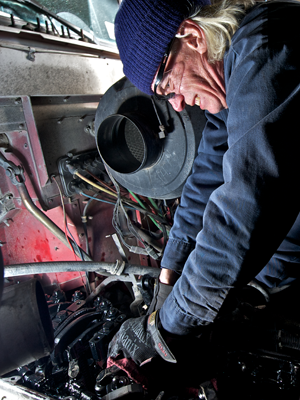Creating a routine fleet maintenance schedule can ensure that your drivers are operating safe and dependable vehicles. Furthermore, routine maintenance can extend the life of each truck in your fleet, which can help to offset the cost of any service that a vehicle may require.
 When Should You Conduct a Fleet Inspection?
When Should You Conduct a Fleet Inspection?
Ideally, you’ll perform a basic inspection of your trucks at least once every 10,000 to 20,000 miles. During an inspection, check each truck’s lights, brakes and other important components for signs of extreme wear or damage. You should engage in preventive maintenance activities such as oil changes and fluid flushes every 30,000 miles or so. Other preventive maintenance tasks include checking for proper tire inflation, proper tire alignment and changing air filters throughout the engine and cabin.
Make Sure That Your Trucks Comply with Government Standards
The Department of Transportation (DOT) will put your truck out of service if a vehicle is not properly maintained. Examples of common service violations include chafed brake hoses, tires with low tread depth and exterior lights that were either dull or not working at all. Sticking to a routine truck repair schedule can help to ensure that your vehicles are making deliveries instead of being transported to a facility to be fixed. It’s worth noting that some minor violations can be remedied through the use of an onsite repair service.
Data Is Your Friend
Telematic systems can show you exactly where each truck in your fleet is at any given time. In addition to allowing adequate oversight of your assets, the data produced by these systems may allow you to spot maintenance issues while they are still relatively easy to fix. Taking care of these issues in a timely manner can minimize the risk of DOT violations or being liable for a serious accident.
Automation Can Make Fleet Maintenance Easier
Automating fleet services tasks can make it easier to remember when a truck needs to be inspected, maintained or repaired. Instead of using sticky notes to remind you that it’s time to complete a maintenance task, a message will automatically be sent to whoever is responsible for ensuring that the work gets done. If issues aren’t addressed in a timely manner, additional notices and warnings can be created and distributed without a person taking action.
Making sure that your fleet is properly managed can reduce maintenance and other costs. It can also minimize your risk of being held liable if any of your trucks are involved in an accident. Finally, taking a proactive attitude toward fleet maintenance may prevent your trucks from being taken out of service by the DOT.
